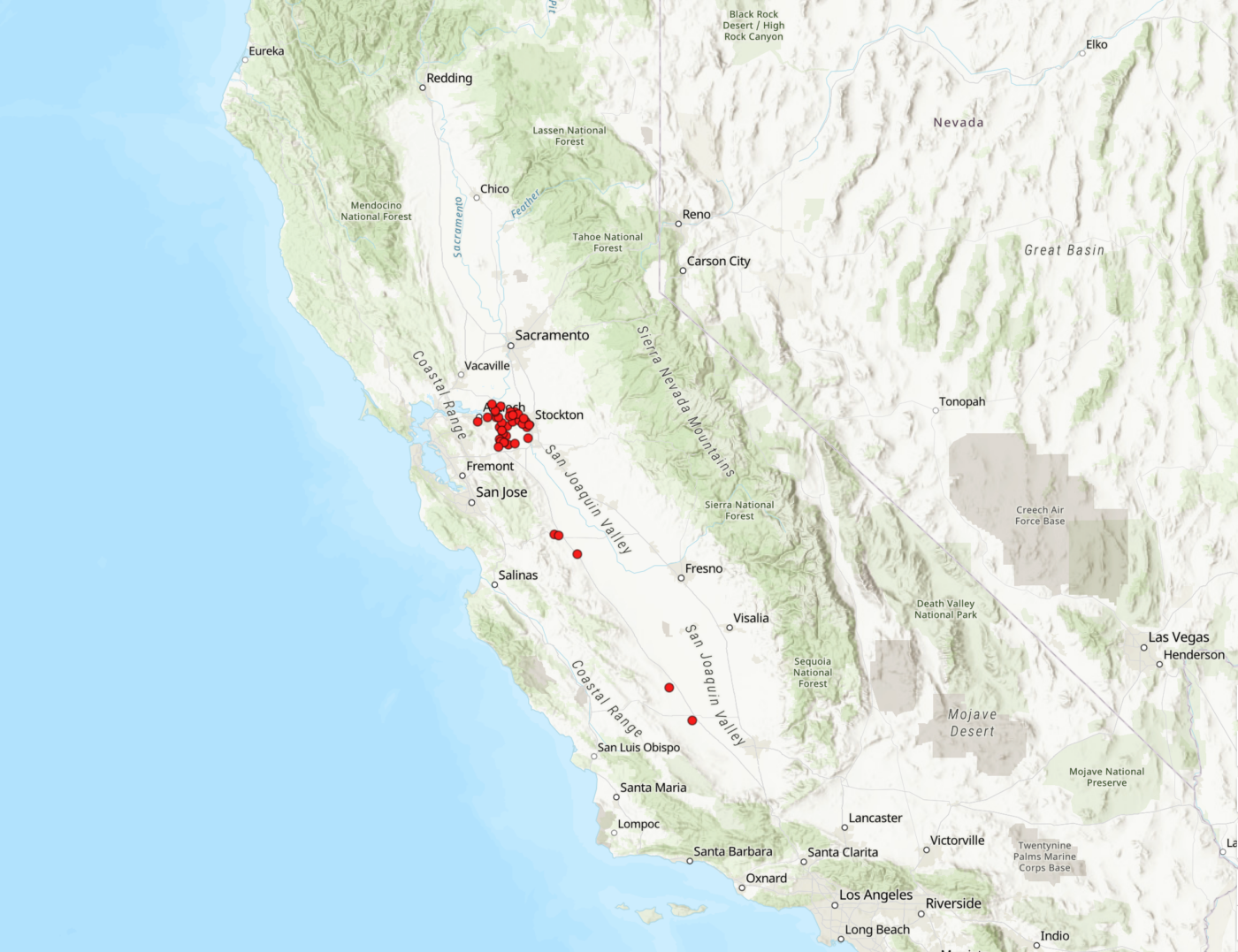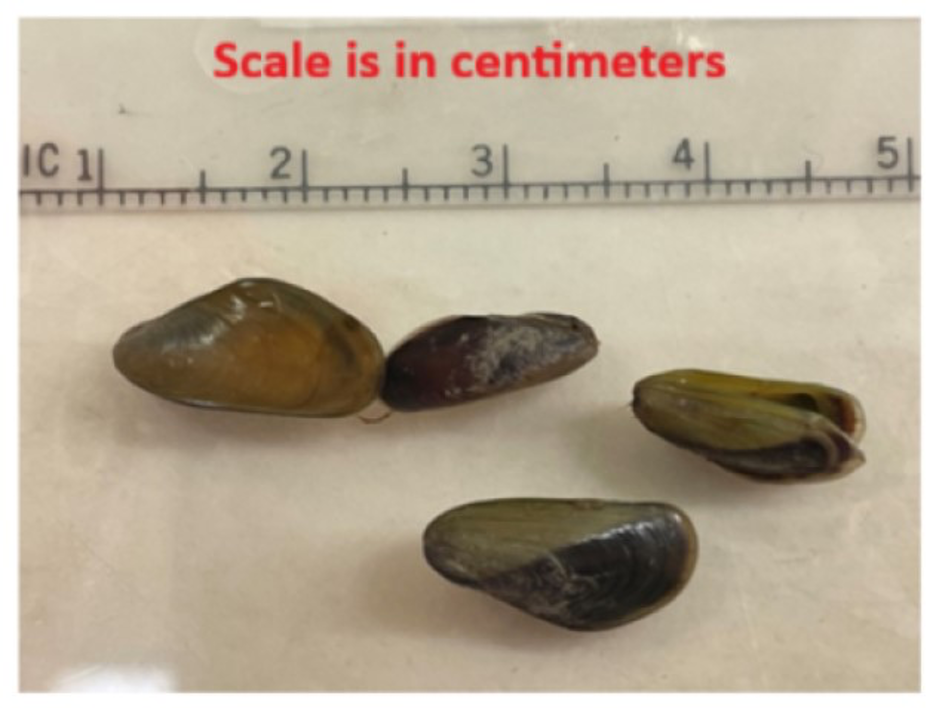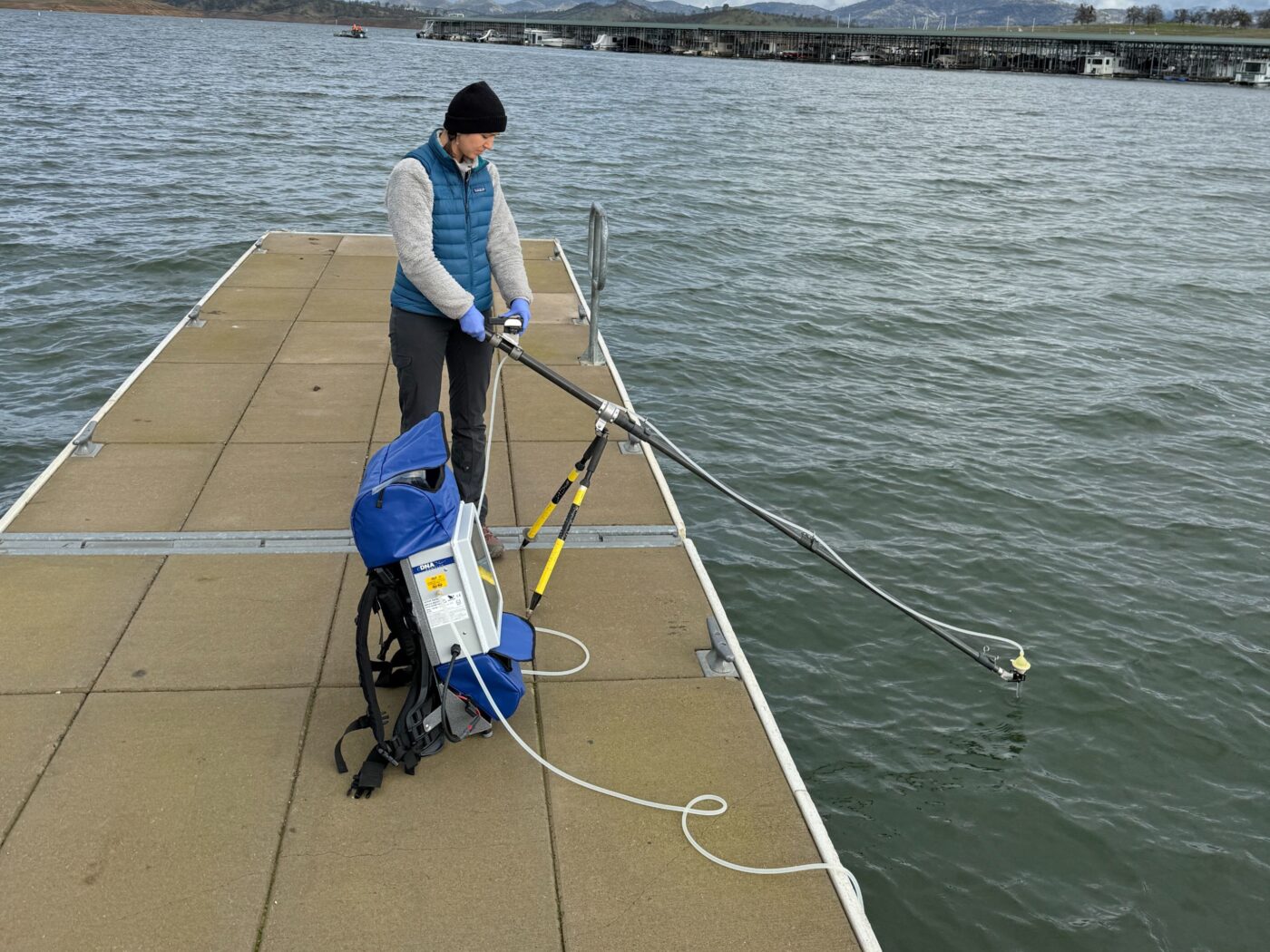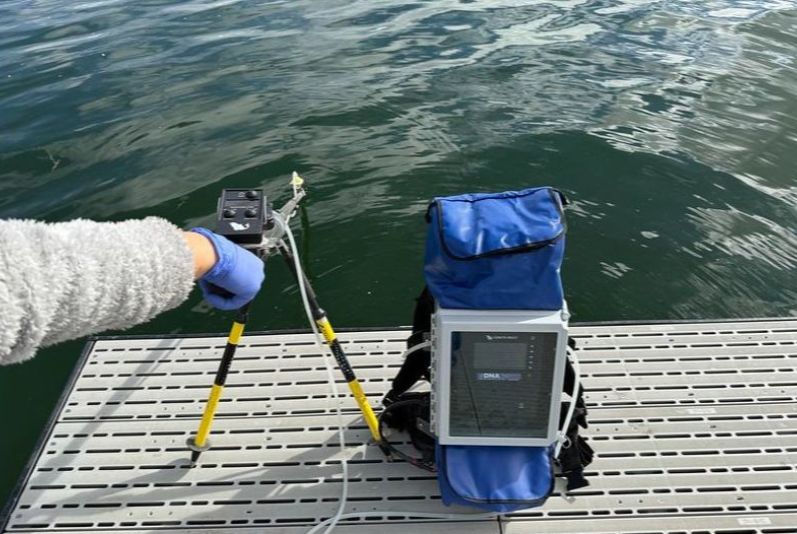Monday May 5, 2025

Without natural predators to keep their populations in check, non-native invasive species can be detrimental to an ecosystem. These invaders often outcompete native species for key resources like food and space, allowing them to dominate landscapes. This disruption can trigger cascading changes in the food chain, ultimately reducing biodiversity and destabilizing delicate ecological balances. Small invasive species can often go unnoticed until their populations are well-established, when eradication becomes extremely difficult or even impossible. This is particularly concerning for aquatic species that thrive in high-traffic areas, such as marinas, where they can easily spread to new locations. As a result, tracking contaminated areas becomes a major challenge. A prime example is the golden mussel, a recently detected invasive species in the Sacramento-San Joaquin Delta.

Golden mussels typically grow to less than 1.5 inches in length and have shells ranging from light gold to darker yellowish-brown in color, providing excellent camouflage. Due to their small size and ability to blend in, they are easy to overlook. These mussels attach to hard surfaces and pose a significant threat by clogging waterways and damaging infrastructure. Golden mussels can be transported on boats, kayaks, canoes, paddleboards, and other watercraft if not cleaned properly after use. If left unchecked, they can damage boat hulls, motors, and other equipment left in water. Additionally, they pose a serious threat to freshwater ecosystems, fisheries, and hydroelectric power generation facilities. Free-floating microscopic mussel larvae can be transported in ballast water, making these creatures incredibly efficient at spreading throughout a water source.
Native to much of East and Southeast Asia, Golden mussels have now made their way into California’s waterways. The first detection in California occurred in October 2024 at Rough and Ready Island, west of the Port of Stockton. Given the ongoing, uphill battle against invasives in the Sacramento-San Joaquin River Delta, these new golden mussel detections have not been taken lightly by resource managers in the region. California Department of Fish and Wildlife, Department of Water Resources, and State Parks recently issued a joint press release announcing their plan to develop a comprehensive Golden Mussel Response Framework, including a $1 million grant available to boating facility operators to aid in the development and enhancement of efforts against invasive mussels.


One effective way to monitor the spread of invasive species, like the golden mussel, is through environmental DNA (eDNA) surveys. As organisms move through their environment, they continuously shed genetic material in the form of skin cells, mucus, scales, and waste. These traces accumulate in water, soil, and sediment, creating a molecular fingerprint of the species present in an ecosystem. By collecting and analyzing water samples, scientists can detect the DNA of invasive species, often long before the organisms are physically observed.
This method is highly sensitive, allowing researchers to identify even low-abundance populations that might otherwise go unnoticed. Environmental DNA surveys are particularly useful in aquatic environments, where traditional monitoring techniques, like netting or trapping, can be labor-intensive, costly, time-consuming, and disruptive to native species – not to mention, often unsuccessful with small species like the golden mussel. With the capability of providing relatively quick results, eDNA sampling and analysis can act as an early warning system, enabling resource managers to take proactive measures before invasions become too difficult to control.


FISHBIO has been actively using eDNA technology in projects across California and Southeast Asia to survey for rare, endangered, and invasive species and evaluate aquatic fish communities. Our team utilizes a specialized eDNA sampling backpack developed by Smith-Root, Inc, which allows for highly efficient, standardized, and customizable filtration of water samples for target species. With confirmed detections in lower San Joaquin Valley waterways, concerns are growing about the potential spread of golden mussels to upper lakes and reservoirs. This is especially true during summer months, when increased boat traffic heightens the risk of transport. To assess whether the mussel’s distribution has expanded into new areas, FISHBIO recently sampled multiple locations within the Tuolumne River watershed, prioritizing habitats where golden mussels are most likely to be introduced and establish populations, such as boat ramps, marinas, and shallow aquatic environments.
As the threat of golden mussels continues, proactive monitoring and early detection are crucial to prevent their spread and minimize their impact on important infrastructure. Environmental DNA sampling provides an invaluable tool to track invasive species with more efficiency than traditional survey methods. By leveraging this technology, scientists and resource managers can stay ahead of potential infestations and obtain the data needed to take action against invaders.
Header Image Caption: Environmental DNA collection on the Salinas River.
This post was featured in our weekly e-newsletter, the Fish Report. You can subscribe to the Fish Report here.
